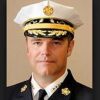It probably goes without saying that I’m a big proponent of firefighter training, especially for self-contained breathing apparatus.
Arguably, there’s no single item of equipment that is more critical for helping ensure firefighters’ safety than modern SCBA that meets the latest industry standards.
During my time in the fire and emergency services, SCBA have become extremely sophisticated and now include “bells and whistles” that seemed beyond reach just a couple decades ago.
Heads-up displays, carbon-fiber-wrapped cylinders, integrated PASS devices, tracking devices, and so forth.
But like any system that depends on a high degree of human-machine interaction, the SCBA on your back is only as good as what’s between your ears. It should also be obvious that any firefighter’s baseline health and fitness will also affect their ability to work while wearing protective clothing and SCBA.
From personal experience, it’s a lot easier, and safer, to use SCBA when you “only” have to worry about the additional weight of your gear, equipment, and tools; much less the often-chaotic situation(s) into which you’re walking, climbing, or crawling.
Regular training on all aspects of SCBA use and care is vital for every firefighter who might encounter a hazardous environment. It’s not like riding a bike, but rather a perishable skill that requires ongoing familiarization and refresher training.
While training under safe, but realistic, conditions is certainly important, as this Wisconsin department has demonstrated there are other ways to learn about the capabilities and limitations of the SCBA, and ourselves.
Stay safe!


